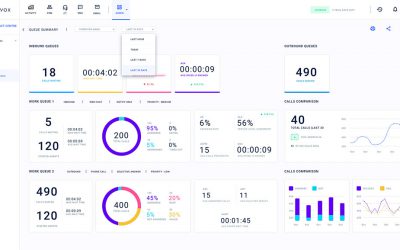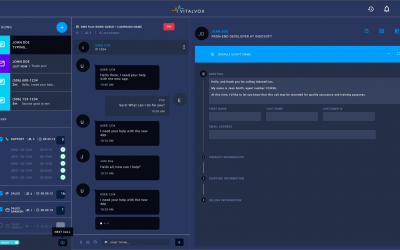SWOT analysis of contact centers

Introduction
Contact center managers face a dynamic environment that requires constant adaptability. Therefore, conducting a SWOT analysis for contact centers allows managers to evaluate operations by identifying strengths, weaknesses, opportunities, and threats. With this tool, managers can make strategic decisions to build on strengths, fix weaknesses, tackle threats, and seize new opportunities. In this blog, we offer insights into how SWOT analysis of contact centers can drive success in today’s competitive landscape.
1. Strengths: Building on Your Foundation
Every contact center has strengths that form the foundation of its success. These could include advanced technology, a highly trained workforce, or exceptional customer service. By identifying these strengths through a SWOT analysis, managers can allocate resources effectively and focus on what sets their center apart. For example, if your contact center excels in customer satisfaction, you can use this to boost retention and attract new clients.
Furthermore, understanding core advantages better equips you to enhance them. As a result, this leads to smoother operations and improved performance. Ultimately, knowing what you do well is the first step to doing it even better.
2. Weaknesses: Improving Internal Efficiency
While recognizing strengths is important, it’s equally vital to address weaknesses. A SWOT analysis uncovers challenges, such as outdated software, high employee turnover, or inefficient workflows. Once these issues are revealed, managers can take action to correct them. For instance, if turnover is high, you could focus on better training and engagement to boost retention.
Moreover, improving weaknesses leads to better performance and reduced costs. Once identified, addressing them can turn liabilities into opportunities for growth.
3. Opportunities: Seizing Market Potential
The business environment constantly evolves, and contact centers must adapt accordingly. A SWOT analysis reveals opportunities for growth, such as adopting new technology or shifting to new markets. For instance, the rise of AI and automation offers ways to improve response times and cut costs.
By regularly conducting SWOT analysis, you ensure your business stays ahead of trends. As a result, this proactive approach helps you outpace competitors and build long-term success.
4. Threats: Confronting External Challenges
No business is immune to external threats, and contact centers are no exception. These include increased competition, regulatory changes, or economic shifts. By identifying threats through SWOT analysis, managers can prepare in advance and develop strategies to reduce risks. For example, new privacy regulations may require training and system updates to avoid legal issues.
Additionally, being aware of threats protects your contact center. It also ensures a faster response when challenges arise. Ultimately, addressing threats builds resilience in an unpredictable market.
Conclusion: Turning Insights into Action
In conclusion, SWOT analysis is a powerful tool for contact center managers. It helps them control operations and position their business for success. By focusing on strengths, improving weaknesses, seizing opportunities, and confronting threats, managers can create a more efficient and competitive contact center.
Contact Us
Need help conducting a SWOT analysis for your contact center? Our experts are here to help you unlock growth and stay ahead of the competition. Contact us today for a consultation!
Categories
- Agent Performance & Training
- AI solutions
- Asterisk
- Business Growth
- Call Center Performance & Productivity
- Call Center Software Platform
- Call Center Technology & AI Integration
- Call Center Training
- Call Center Workforce Management
- Call Monitoring
- Cloud-Based Solutions
- Customer Experience
- Data Security
- General
- Insights
- Integrated Customer Service
- News
- Omnichannel Communication Strategy
- Omnichannel Support
- Quality Assurance
- Tech


